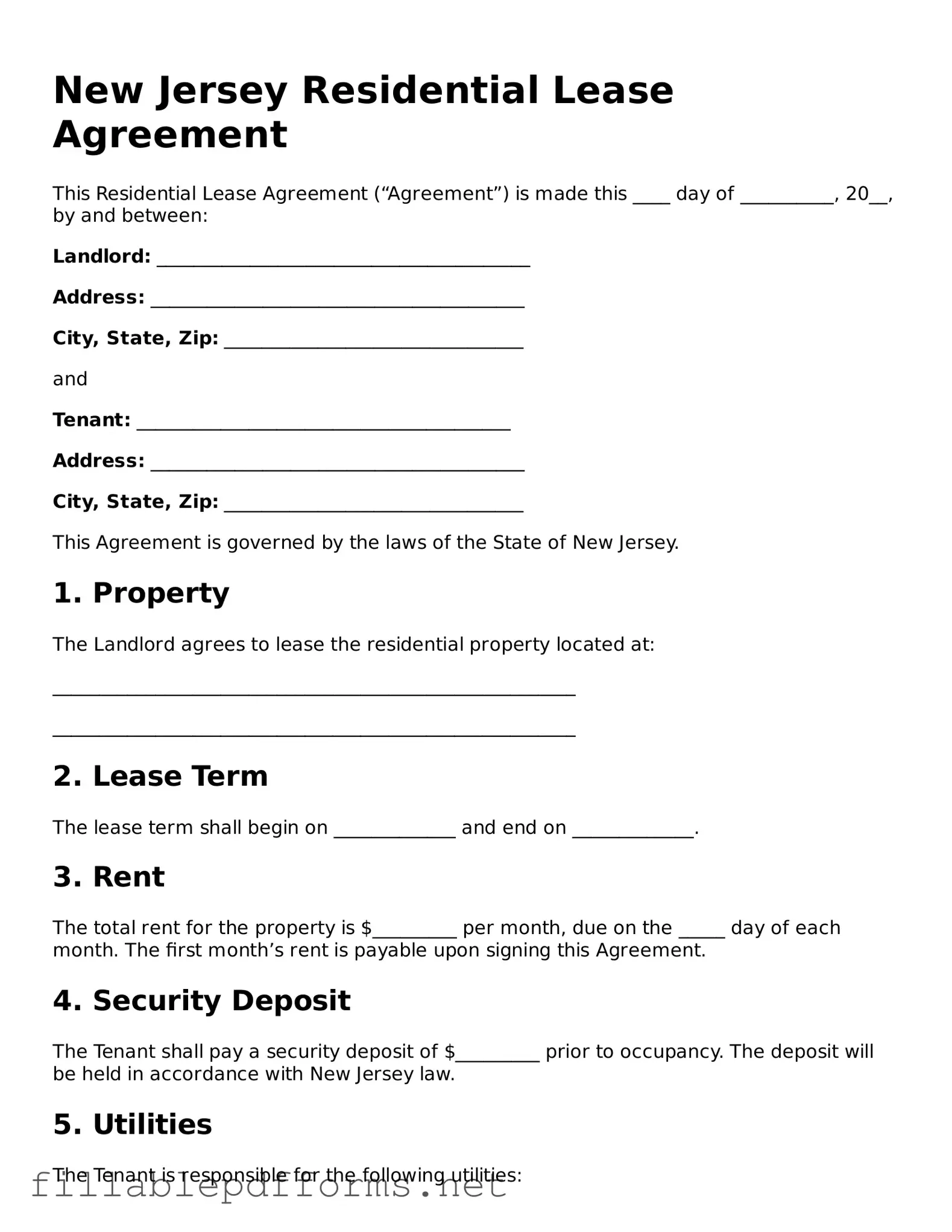Attorney-Verified Residential Lease Agreement Form for New Jersey State
A New Jersey Residential Lease Agreement is a legal document that outlines the terms and conditions between a landlord and tenant for renting residential property. This form serves to protect the rights of both parties and establishes clear expectations regarding rent, duration, and responsibilities. Understanding this agreement is essential for anyone involved in a rental arrangement in New Jersey.
Launch Editor Here
